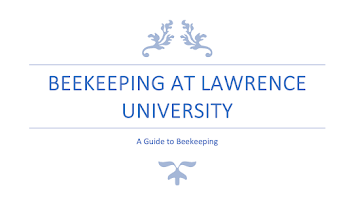Carol Emmons: Where Does Art Come From?
| Advertisement for Carol Emmons Art Talk |
Two main questions came up during Carol Emmons art talk: First, how do you know what to do? And second, where does art come from?
I find that Emmons answers the first question perfectly. She said that you may not always know what you're supposed to be doing, and I honestly couldn't agree more. In my opinion, this notion goes hand in hand with what McLuhan said about the amateur and the professionalist.
"Professionalism is environmental. Amateurism is anti-environmental. Professionalism merges the individual into patterns of total environment. Amateurism seeks the development of the total awareness of the individual and the critical awareness of the ground rules of society. The amateur can afford to lose. The professional tends to classify and to specialize, to accept uncritically the ground rules of the environment. The ground rules provided by the mass response of his colleagues serve as a pervasive environment of which he is contentedly unaware. The "expert" is the man who stays put" (McLuhan 93).
Here we see McLuhan calling out those who believe they know what to do and society's expectations for the so-called professional and amateur. Whose to say that the "amatuer" isn't better than the "professional"? What determines amateur and professionalism in today's society? Is it growth, is it maturity? HOW DO YOU KNOW WHAT TO DO? In the growing age of technology there are people left behind, and many are labeled as the amateurs because they aren't flowing with the times. However, have we ever considered that these people just choose to stay as they are and that the amateurs are the face of progression? The world of art is ever changing and full of possibilities. It reflects the past, rejects the future, and visa versa.
This leads me to Emmons second question, "Where does art come from?". Here, she goes on to talk about seven points that answer this question. For her, she believes that genetics, environment, intervention, education, research, site, and theme are all key parts.
 |
| Graphic Emmons used to answer, "Where Does Art Come From?" |
I found that this was a common theme McLuhan also used in "The Medium is the Massage". To go through the evolution of technologies, McLuhan started with the idea of "you" which is a connection to genetics, goes into the ideas of "space" and "time" which correlates with the idea of site, and theme. McLuhan also talks about how the environment and education all impact how people view the world. Both Emmons and McLuhan use these seven things to show the evolution of choices, and how they lead to something bigger. I also strongly believe things are left out of this equation. For me, I feel like this question is different for everyone. Art comes from a space where I let go, a place where I can express myself freely. It comes from a place of emotion and a place of reflection. Where art comes from isn't always so neatly put together and is often complicated, you could say the same thing about what technology does for this ever growing world of ours.


Comments
Post a Comment